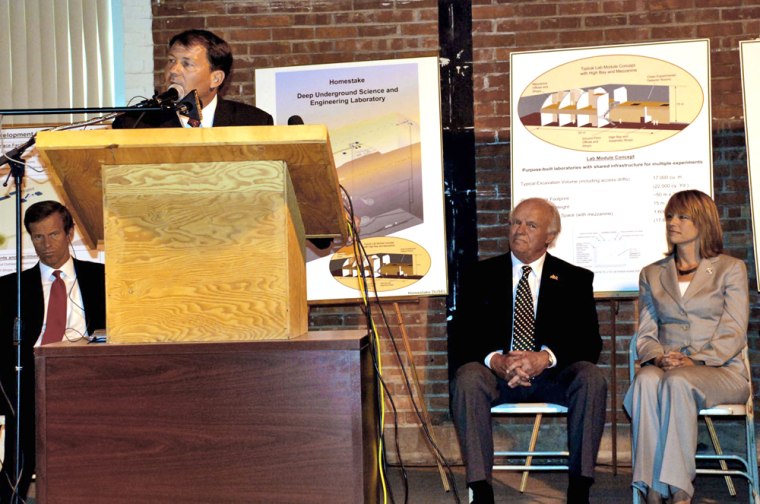The National Science Foundation on Tuesday chose South Dakota's closed Homestake Gold Mine as the site for a new underground physics lab to study the history and makeup of the universe.
South Dakota won the project, called the Deep Underground Science and Engineering Laboratory, over three other states — Colorado, Minnesota and Washington. The NSF said the lab, located at Lead, S.D., in the northern Black Hills, would be the largest and deepest facility of its kind in the world if it is built as currently envisioned.
The research team developing the project is expected to receive up to $5 million a year for three years to continue planning for the lab. Construction is scheduled to start in fiscal year 2010, depending on funding from Congress.
Physicists want to go deep underground to conduct experiments to increase their understanding of the universe's composition, its beginning and its future. The lab would conduct research in physics, astrophysics, earth science and geomicrobiology, studying particles from the sun, the formation of minerals and hydrology inside the Earth and microbial life deep underground.
The agency says it can only do these studies at great depth, where thousands of feet of rock would shield the experiments from background activity. Deep in the mine, scientists would have direct access to geological structures and tectonic processes.
"The reason for going underground is the same reason why astronomers look at stars at night," said Ken Lande, a University of Pennsylvania physicist who manages a small existing underground lab at Homestake.
Scientists also want to study dark matter, which has gravitational force but is not visible. Other experiments would study whether protons decay, which the NSF has said would provide evidence that all the fundamental forces are united at some very high energy.
South Dakota touted Homestake's depth, its existing miles of tunnels and shafts, and immediate availability as reasons to put the lab there. Mining stopped at Homestake seven years ago.
Homestake and a mine in Colorado were chosen in 2005 as finalists for the lab. The NSF reopened the competition in 2006 after the University of Washington complained that its proposal was unfairly eliminated. The foundation later accepted proposals from Washington and Minnesota.
The Colorado and South Dakota teams already have received $500,000 each to prepare a conceptual design.
In addition to the scientific research expected out of the lab, South Dakota stands to gain about $300 million in federal funding and the potential for millions of dollars more in scientific grants to the participating universities. No official cost estimates or staffing levels have been mentioned yet.
Homestake has had some environmental problems in the past, but South Dakota Gov. Mike Rounds said Tuesday that any potential pollution problems pose no threat to the underground lab. The state has insurance to cover the cost of any environmental issues that would result from the scientific use of the shaft, Rounds said.
Homestake began dumping waste from its gold-mining business into Whitewood Creek in about 1877. In the 1980s, the U.S. Environmental Protection Agency declared the creek a Superfund site and ordered Homestake to clean up the creek. The company spent over $100 million on that project.
